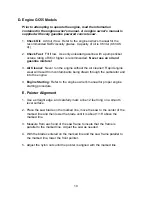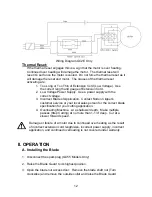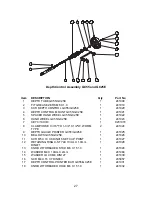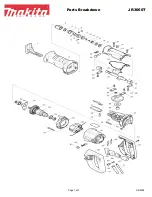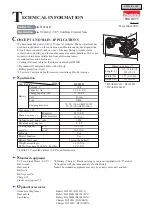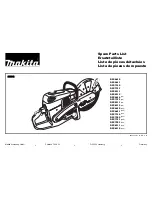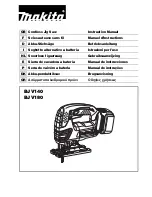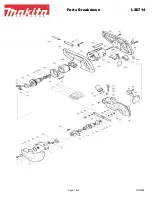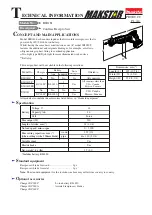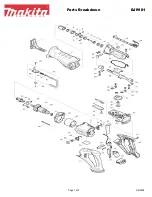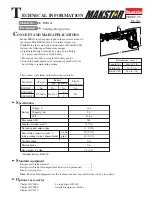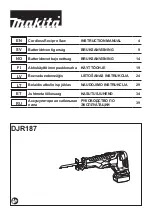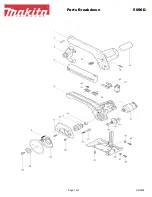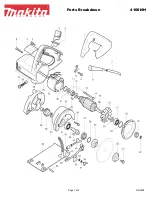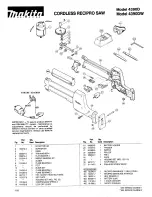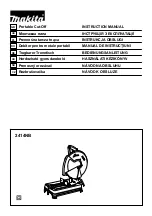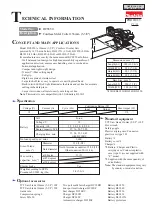
21
3.
Remember, too much tension shortens belt and bearing life!
4. Check the belt tension frequently during the first day of operation. Check
the belt tension periodically thereafter and make any necessary
adjustments.
5. The two most common causes of misalignment are shown in the
Figure 1 and Figure 2 to the right.
a). The engine drive shaft and the blade shaft are not parallel.
b). The pulleys are not located properly on the shafts.
6. To check alignment, all you need is a steel straight edge.
7. Line up the straight edge along the outside face of both pulleys as
shown in the drawing.
8. Misalignment will show up as a gap between the pulley face and the
straight edge.
9. Make sure that the width of the outside land (Area between the belt and
the edge of the pulley) is equal on both pulleys.
D. Depth Control
The cutting depth is controlled by a chrome turn handle. It is located next to
the push handle base, easily accessible from the rear of the saw. The handle
must first be unlocked before it can be turned. It is locked by a black knob
located on the operator’s left side of the hand wheel near the base of the
handle. This knob must be turned counter-clockwise to unlock the handle.
Once unlocked rotating the handle clockwise will lower the cutting blade.
Rotating it counter-clockwise will raise the cutting blade. When the proper
cutting depth is achieved by reading the depth gauge, relock the turn handle
to ensure a constant cutting depth throughout the cut.
The depth gauge can be found further down the shaft of the turn handle. This
gauge will already be preset for an Ø10" blade, but it still must be calibrated
by the user since blade diameters may vary. When using an Ø8" blade, the
gauge must be readjusted from an Ø10" blade to an Ø8" blade. Simply
loosen the black knob found near the collar of the gauge and slide it
accordingly to achieve the proper reading.
FIGURE 1
FIGURE 2
Summary of Contents for GC25E
Page 39: ...39 NOTES...




